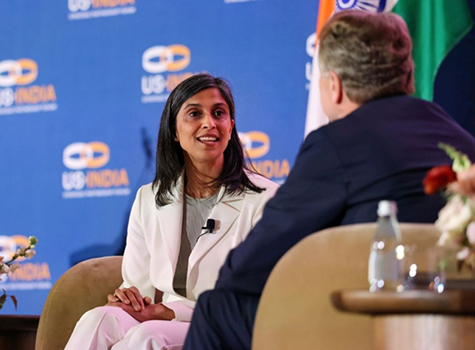
As we all know, Indian dances always tell us stories of Indian epics, literature, social life, and human emotions. Of course, all our stories also depict God in human situations and they become the hero and the heroine, which are Nayaka and Nayaki. For example, Radha, the heroine is the lover of Lord Krishna the hero. The literary texts, including the Natya Shastra, recognize eight basic types of Nayaka, the hero and eight types of Nayaki, depending on the nature of the story.
The types of Nayaki are more popular than Nayaka in some dance forms. However, when Lord Shiva or Krishna is depicted, Nayaka‘s characteristics become more prevalent. There are two subdivisions in these eight types.
One is the types of Nayaka based on nature. They are:
Dhirodatta: of noble nature, a King, a minister or a general;
Dhiralalita: affectionate, royal;
Dhiroddhatta: arrogant, godly, Indra; and
Dhiraprasanta: calm, Brahmin.
The four types of Nayaka based on their behavior in love are:
Anukula: the devoted, faithful husband like Lord Shiva;
Daksina: courteous, treats equally all women;
Dhrsta: bold, shameless, indifferent when caught red-handed with other women;
Satha: rogue, loves more than one woman but pretends otherwise.
In Bharatha Natyam, Kuchipudi, and Kathak dances like Varnams, Javalis and Tumris speak of such characteristics in men the heroine loves.
Likewise, the eight Nayakis or heroines are:
Abhisarika: yearning for her lover, goes out to meet him, For Example, Radha;
Kalahantarita: separated due to a quarrel, like Satya Bhama;
Khandita: broken hearted;
Prositapriya: whose lover or husband lives abroad;
Svadhinabhartrka: whose husband is charmed of her and stays with her;
Vassakasajja: dressed up for union, used a lot in Kathak;
Vipralabda: the deceived;
Virohitkhantita: distressed by separation.
I know all these names and their characteristics are hard to memorize, but it is good to understand the importance of these roles and the pre-defined regulations of Natya Shastra when we choreograph dances. Accordingly, we can actually try to live the character we play and feel the emotions and the pain and the joy of the characters we depict.
In order to depict these characters, we also need to understand the utilization of our body movements. How we move our eyes, eyebrows, and head along with our posture brings a character to life.
Shiro-Bhedas
The Shiro-Bhedas or head movements are classified into nine major parts. These are samam, udwahitam, adhomukham, alolitam, dhutam, kampitam, paravrttam, utkshiptam and parivahitam.
Sama Siras: When the head is kept straight and motionless in a natural way.
Udwahita Siras: When the face is raised up.
Adhomukha Siras: When the face is bent down.
Alolita Siras: When the head moves in a circle.
Dhuta Siras: When the head is turned from left to right and from right to left.
Kampita Siras: Moving the head up and down.
Paravrtta Siras: When the head is turned away.
Utkshipta Siras: When the head is turned to a side and raised.
Parivahita Siras: If the head is moved from side to side.
Drishti-Bhedas
There are eight classifications of glances called Drishti-Bhedas. These are one of the most important elements of dancing. I have seen some of my gurus tell their whole story just with their eyes and eyebrows. It is amazing to watch them bring a story to life. Here are the classifications.
Saman: Gazing with eyes leveled unblinkingly.
Alokitam: Swiftly turning the eyes round.
Sachi: Looking out of the corners of the eyes obliquely without moving the head.
Pralokitam: When the glance turns from side to side.
Nimilitam: looking with eyes half open.
Ullokitam: Looking up.
Anuvruttam: Glancing quickly up and down.
Avalokitam: Looking downwards.
Bhru-Bhedas
There are six major classifications of eyebrow movements called Bhru-Bhedas. Not many people can actually move both their eyebrows one at a time. Sometime it is almost comical to watch people try it.
Sahaja: Natural eye brow in a composed face.
Patita: When eyebrows are at rest and then lowered.
Utkshipta: When either one or both eyebrows are raised.
Chatura: When both brows are moved and the expression is pleasant.
Rechita: One brow is raised in a charming fashion.
Kunchita: When one or both eyebrows are arched.
Griva-Bhedas
The four major neck movements are used several times in many dances:
Sundari: Moving the head obliquely or to and fro horizontally.
Tiraschina: An upward movement of the neck on both sides as though the face was forming the figure of horizontal 8.
Parivartita: Neck moving from right to left suggesting the half moon.
Prakampita: The neck moves forward and backward in a thrusting motion like that of a pigeon.
These structured movements have been taught and practiced for centuries. The more we master these movements, better our story telling ability will be as a dancer. As I see many teachers move into our area, I hope this information will be useful to teach our students.
Posted: Tuesday, December 26, 2017



